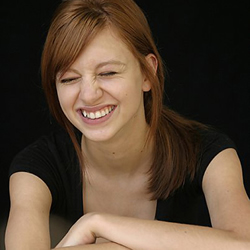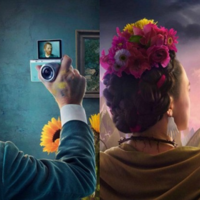More about Diane Arbus
- All
- Info
- Shop

Sr. Editor
Diane Arbus photographed the weird and downtrodden, though she herself was born to a wealthy Jewish family in New York City.
All her kin had an artistic bent that they could follow freely because they were unaffected by the Great Depression. Lucky ducks. Diane started out with a fashion photography business with her husband, Allan Arbus (who later did a stint on M*A*S*H!). They both found the fashion world shallow and she turned to photojournalism before eventually pursuing her solo career, which is where we get most of her famous pictures. She focused her lens on people with disabilities, circus performers, transgendered folks, cross dressers, nudists- and these became her signature works.
It’s possible she became obsessed those on the so-called fringes of society because she herself was so embarrassed of her wealth growing up. Though she once said she was afraid she’d only be remembered for taking photographs of “freaks,” it seems her fears were realized.
While I think some of her photographs seem quite exploitative, Arbus maintained she admired her subjects. She said her aim was to show, “that it’s impossible to get out of your skin into somebody else’s” because, “that somebody else’s tragedy is not the same as your own.” In this sense I think her work is successful, but I’m still not sure if her pictures are supposed to inspire empathy, pity or simply the thrill of being faced with difference.
But Arbus may have also been drawn to these outcast communities because she identified with them. She suffered from horrible depression and felt isolated and rejected, too. So much so that she eventually took her own life, overdosing on barbiturates and cutting her wrists at the age of 48.
Featured Content
Here is what Wikipedia says about Diane Arbus
Diane Arbus (/diːˈæn ˈɑːrbəs/; née Nemerov; March 14, 1923 – July 26, 1971) was an American photographer. She photographed a wide range of subjects including strippers, carnival performers, nudists, people with dwarfism, children, mothers, couples, elderly people, and middle-class families. She photographed her subjects in familiar settings: their homes, on the street, in the workplace, in the park. "She is noted for expanding notions of acceptable subject matter and violates canons of the appropriate distance between photographer and subject. By befriending, not objectifying her subjects, she was able to capture in her work a rare psychological intensity." In his 2003 New York Times Magazine article, "Arbus Reconsidered", Arthur Lubow states, "She was fascinated by people who were visibly creating their own identities—cross-dressers, nudists, sideshow performers, tattooed men, the nouveaux riches, the movie-star fans—and by those who were trapped in a uniform that no longer provided any security or comfort." Michael Kimmelman writes in his review of the exhibition Diane Arbus Revelations, that her work "transformed the art of photography (Arbus is everywhere, for better and worse, in the work of artists today who make photographs)". Arbus's imagery helped to normalize marginalized groups and highlight the importance of proper representation of all people.
In her lifetime she achieved some recognition and renown with the publication, beginning in 1960, of photographs in such magazines as Esquire, Harper's Bazaar, London's Sunday Times Magazine, and Artforum. In 1963 the Guggenheim Foundation awarded Arbus a fellowship for her proposal entitled, "American Rites, Manners and Customs". She was awarded a renewal of her fellowship in 1966. John Szarkowski, the director of photography at the Museum of Modern Art (MoMA) in New York City from 1962 to 1991, championed her work and included it in his 1967 exhibit New Documents along with the work of Lee Friedlander and Garry Winogrand. Her photographs were also included in a number of other major group shows.
In 1972, a year after her suicide, Arbus became the first photographer to be included in the Venice Biennale where her photographs were "the overwhelming sensation of the American Pavilion" and "extremely powerful and very strange".
The first major retrospective of Arbus' work was held in 1972 at MoMA, organized by Szarkowski. The retrospective garnered the highest attendance of any exhibition in MoMA's history to date. Millions viewed traveling exhibitions of her work from 1972 to 1979. The book accompanying the exhibition, Diane Arbus: An Aperture Monograph, edited by Doon Arbus and Marvin Israel and first published in 1972, has never been out of print.
Check out the full Wikipedia article about Diane Arbus




















Hey Sartle! We need more Diane Arbus photos on your site!